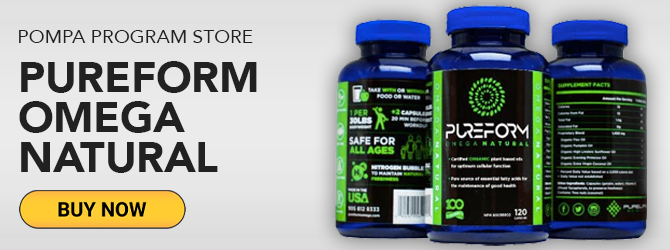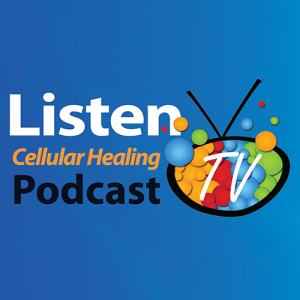Infertility seems to be on the rise. A lot of couples are having trouble getting pregnant, so much so that we decided to devote an episode of CHTV to some of the issues that impact fertility and infertility. There are many physiological factors that come together to create the kind of perfect storm leading to infertility; therefore, finding a solution involves looking at our how our cells work.
The Perfect Storm
As often seen with the clients we serve all over the world, chronic health problems are caused by a combination of factors that worsen and accumulate over time. It’s never just one body system or one part of the body that’s affected. So, just treating the symptoms of disease is ineffective long term. Infertility is no different. Environmental toxins and poor diet drive inflammation in the body, paving the way for eventual fertility problems. Some major triggers include:
- Blood Sugar Imbalance and Insulin Resistance
- Toxicity Issues
- Autoimmune Disorders
- Gut Health
- Hormone Imbalance
- Stress Levels
These triggers may sound separate, but they’re very connected. Each point to hormone dysfunction, a major contributing factor to infertility. Hormones act on a cellular level, communicating with our body’s cells and directing their activity. When hormones are thrown out of balance, the effects are felt on a massive scale, cascading throughout the body.
Hormone Dysregulation
Hormone dysregulation is the epidemic within the epidemic. Hormones are how things communicate gland to gland, cell to cell. Hormone receptors lie right on the cell membrane. Toxin accumulation, poor gut health, and autoimmune disorders drive cellular inflammation, affecting our ability to synthesize and use hormones effectively.
The glands of the endocrine system, which include the pituitary gland, the hypothalamus, adrenals, thyroid, ovaries, and testes, are responsible for regulating hormone levels in the bloodstream. From the blood, hormones travel around the body socketing into receptors of cell membranes where they’re needed. If we look at how toxins can affect the brain, then we can see how brain toxicity can affect us downstream.
https://youtu.be/dakMFj-KAyg
Mercury Toxicity
Studies show that certain toxins, especially heavy metals like mercury, accumulate in the pituitary and thyroid glands.1 The problem is that the pituitary gland is part of the body’s “control tower” for hormone regulation. Hormones necessary for pregnancy, like luteinizing hormone, LH and FSH, and are communicated from the pituitary. These in turn can affect progesterone and estrogen levels. If the pituitary and other endocrine glands upstream are not functioning because they’re highly toxic, hormone levels downstream coming from the ovaries and testes can be negatively impacted.
We’ve seen in our practice that many men and women experiencing infertility test high in mercury. There are many ways that mercury can negatively affect fertility.2 Studies have shown that mercury is the most damaging to insulin, estrogen, testosterone, and adrenaline levels in the body.1
Mercury doesn’t just accumulate in the brain. We’re finding that men with elevated mercury have detectable levels in the ejaculate and particularly in the sperm. That, number one, is a problem for the sperm, affecting its motility (ability to swim).3 Secondly, there’s potential for the women’s autoimmune system to treat the sperm as a pathogen and attack it. Thirdly, we know that it affects certain minerals like selenium, manganese and zinc. Other heavy metals, like lead for instance, can also have a direct effect on sperm health.
Thyroid Toxicity
The thyroid is another member of the endocrine system that can affect fertility when it’s too toxic to function properly. We call the thyroid the canary in the coal mine because it’s so sensitive to toxins and prone to being attacked by the immune system in cases of autoimmune disorder. Halogenated compounds like fluoride, chloride, and bromine are known for inhibiting proper thyroid function (read more here). Pesticides are also known for having a very strong link to thyroid disease. One study even found that women who worked or lived with someone who worked in the agriculture industry had a greater risk of developing thyroid disease over women who did not.4
Watch CHTV Episode 101 on Detoxing Your Life here.
There are various factors that can impact thyroid health. Read more about thyroid conditions and what to do about them here.
Xenoestrogens
Xenoestrogens are endocrine disrupters that mimic estrogen in the body. We find them in pesticides, organo-phosphates, plastics, and more. They are very strong, and highly unbalancing to hormones. Xenoestrogens drive estrogen levels in the body, affecting the pituitary, uterus (estrogen dominance), and causing chaos in male reproductive health.5 Studies have even linked xenoestrogen levels in young girls to early onset of puberty, known as precocious puberty.6
Testosterone Imbalance
PCOS, Polycystic Ovarian Syndrome, is linked to overproduction of DHT, a compound created when testosterone comes into contact with 5-alpha reductase. PCOS has strong ties to infertility in women. DHT has also been linked to hair loss in men and possibly with male reproductive and prostate health.
Safeguarding Reproductive Health
Now that we’ve examined some of the factors that impact reproductive health, you can see it all comes down to the cell. Heavy metal toxicity (read the “When Detox is Dangerous” series here: Part One, Part Two and Part Three), hormone dysfunction and inflammation are all happening on a cellular level. For this reason, restoring reproductive health must involve my Multi-Therapeutic Approach, including ancient healing strategies, proper supplementation, and cellular detox. Fix the cell, fix the body.
Using the PompaCore Cellular Detox™ process is instrumental in order to drive down inflammation, detox the cells, normalize hormone levels, and restore proper cellular function. When you’re dealing with brain toxicity, as is so often the case with infertility, it’s crucial to detox the right way at the right time. The process needs to hit upstream where toxins are buried deep in the pituitary, the hypothalamus, and the thyroid glands. Stepping in with true binders helps to ensure that toxins aren’t reabsorbed. We’ve seen many clients become pregnant after detoxing properly.
Some other great tips for restoring cellular function and improving fertility:
Get rid of pesticides in your food. They’re loaded with xenoestrogens. Look for organic produce and grass finished or pasture raised meats, all GMO free. Review my Cellular Healing Diet book for recipe ideas and guidelines.
You can also find estrogen mimics in cosmetics, beauty products, and plastics. Avoid them, and look for natural alternatives. Check out the beauty products my family uses.
Remember those ancient healing strategies. Mineral rich bone broth, gut restoring ferments, and fasting techniques can help to calm down inflamed cells and jumpstart cell restoration.
Don’t over-exercise or put your body through extremes of stress. Stress drives up cortisol levels, increasing inflammation, and lowering your ability to handle stressors. Exercising the right way and maintaining a healthy reproductive cycle is essential to combating infertility.
Conclusion
Achieving great reproductive health isn’t an impossible goal. A Multi-Therapeutic Approach, the right knowledge, and proven tools offer what you need to restore fertility. Using my proven MTA, you can work to drive down inflammation, remove harmful toxins, and restore cellular health to live your healthiest life.
- CHTV Episode 88: Weight Loss Resistance
- Diabetes: The Unspoken Solution
- PompaCore Cellular Detox™ – A Top Strategy to Create Your Best Health Ever
- The Autoimmune Answer: As Simple as a “Three-Legged Stool”
- Leaky Gut: An Interview with Dr. Zach Bush
- CHTV Episode 86: Lead and Hormone Imbalances
- CHTV Episode 135: How Stress Impacts Cellular Health
- R2: Regenerating the Cell Membrane
- CHTV Episode 85: Healthy Pregnancy Part Two
- When Detox is Dangerous Series: Part One, Part Two and Part Three
- Could Your Thyroid Be Why You Are Not Feeling Well?
- CHTV Episode 101: Toxic Top 10
- Thyroid Disease and Thyroid Dysfunction
- CHTV Episode 138: How To Fix Hair Loss and Hormone Imbalance
- R4: Reducing Cellular Inflammation
- What is Cellular Detox and Cellular Cleansing?
- Cellular Healing Diet: 1-Week Menu Plan
- Toxic Beauty Products
- Bone Broth for Fasting and Better Health
- CHTV Episode 131: Getting Funky in the Kitchen
- Intermittent Fasting – A Top 5 Strategy to Create Your Best Health Ever
- Burst Training – A Top 5 Strategy to Create Your Best Health Ever
- My Multi Therapeutic Approach
- Gb – Pituitary/Pineal
- DesBio – Hypothalamus
- Ga – Adrenal
- Gf – Thyroid
- F+ – Female Plus
- Mpr – Prostata Ovatum
- CytoDetox™
- The Cellular Healing Diet Book
- Rice, Kevin M., Ernest M. Walker, Miaozong Wu, Chris Gillette, and Eric R. Blough. “Environmental Mercury and Its Toxic Effects.” Journal of Preventive Medicine and Public Health 47.2 (2014): n. pag. Web. http://jpmph.org/journal/view.php?doi=10.3961/jpmph.2014.47.2.74
- Zhu, Xinqiang, Yukinori Kusaka, Kazuhiro Sato, and Qunwei Zhang. “The Endocrine Disruptive Effects of Mercury.” Environmental Health and Preventive Medicine. Springer-Verlag, Jan. 2000. Web. https://www.ncbi.nlm.nih.gov/pmc/articles/PMC2723593/
- Ernst, E., and JG Lauritsen. “Effect of Organic and Inorganic Mercury on Human Sperm Motility.” National Center for Biotechnology Information. U.S. National Library of Medicine, June 1991. Web. https://www.ncbi.nlm.nih.gov/pubmed/1653954
- Goldner*, Whitney S., Dale P. Sandler, Fang Yu, Jane A. Hoppin, and Freya Kamel And. “Whitney S. Goldner.” Pesticide Use and Thyroid Disease Among Women in the Agricultural Health Study. American Journal of Epidemiology, May 2009. Web. http://aje.oxfordjournals.org/content/171/4/455.abstract
- Ronchetti, SA, GV Novack, MS Bianchi, MC Crocco, BH Duvilanski, and JP Cabilla. “In Vivo Xenoestrogenic Actions of Cadmium and Arsenic in Anterior Pituitary and Uterus.” National Center for Biotechnology Information. U.S. National Library of Medicine, July 2016. Web. https://www.ncbi.nlm.nih.gov/pubmed/27256631
- Al-Agha, Abdulmoein E., Duaa Aiash, and Bara’ah O. Tatwany. “The Relationship Between Xenoestrogens Exposure And Early Puberty Among Young Females Living In Jeddah, Saudi Arabia.” Family Medicine & Medical Science Research, 16 June 2015. Web. http://www.omicsgroup.org/journals/the-relationship-between-xenoestrogens-exposure-and-early-puberty-among-young-females-living-in-jeddah-saudi-arabia-2327-4972-1000I179.php?aid=58054











